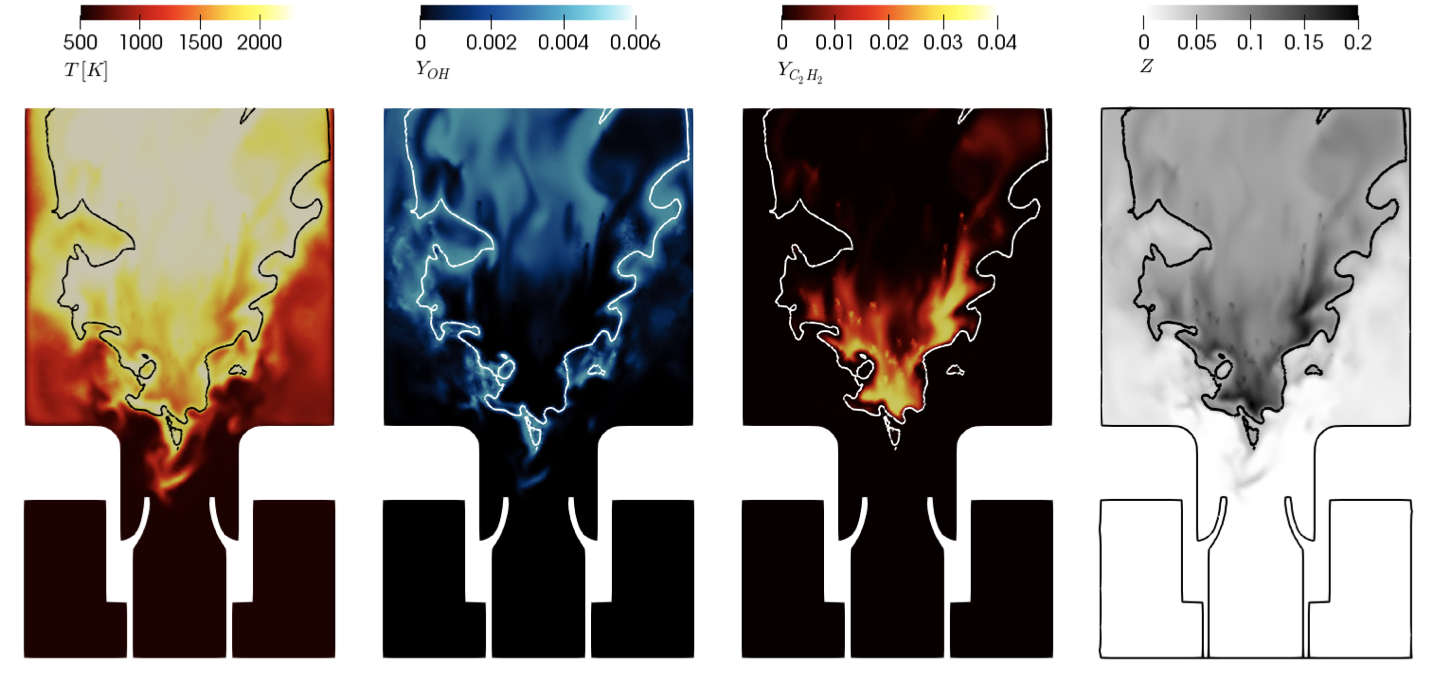
The reduction of soot emissions, one of the main pollutants together with nitrogen oxides in the aviation sector, has been targeted as a priority in the decarbonisation process traced by the European Union for the coming years. ESTiMatE is a project under the Clean Sky program funded by the European Commission and composed of seven leading European institutions in experimental and numerical combustion research. ESTiMatE is focused on the characterisation of soot in relevant conditions and the development of modelling tools able to accurately predict this pollutant in the frame of High-Performance Computing (HPC).
Currently crossing the equator of its lifetime, the consortium is about to start the central tasks of the project, consisting of the numerical simulation of flames to assess the capabilities of the models to predict soot formation. Experimental campaigns carried out by the Karlsruher Institut für Technologie (KIT) and the Technische Universität Berlin (TUB) in laminar and turbulent flames respectively have provided a rich database which will be exploited when comparing to the numerical investigations. Moreover, the laminar flames measured by KIT have been already used by the Universität Stuttgart (IVLR) in collaboration with the Technische Universität Darmstadt (TUD) to develop a new and accurate chemical mechanism with special attention to the reliable prediction of soot precursors, the polycyclic aromatic hydrocarbons (PAHs).
In the coming months, the potential of the soot models developed by TUD in the Computational Fluid Dynamics (CFD) code OpenFOAM and the Barcelona Supercomputing Center (BSC) and the Technische Univeristeit Eindhoven (TUE) in the CFD code Alya will be tested. In this validation the Universitat Politècnica de València (UPV) will also participate.
Predicting soot is a quite complicated task since both chemical and physical processes intervene introducing a high computational load due to the large number of PAHs and the inherent complexity of accurately modelling not only soot inception, but also condensation and coagulation processes. Depending on the transported quantities the method of moments, used by TUD, or the sectional method, explored by TUE and BSC, have been derived.
To carry out the validation campaign, different configurations with increasing level of complexity will be simulated. First, efforts will be focused on the CFD calculation of a turbulent diffusion flame on a counter flow rig and a swirling configuration as representative cases of low TRL (Technology Readiness Level) test rigs. Then, the simulation of a single sector rig will be targeted and, finally, a real configuration, as it is a full annular configuration of the combustion chamber of an areoengine, will be simulated. The experimental information for these two last cases will be provided by Rolls Royce. Moreover, to ensure an efficient implementation of the models and algorithms an analysis of their performance will be carried out to prevent low performance in large-scale simulations.
The CFD simulations are expected to cover a wide range of TRL levels to demonstrate the accuracy and robustness of the advanced soot models developed in the project. To this aim, the availability of detailed experimental and an accurate chemical mechanism together with the application of such soot models will pave the way to better understand the complex phenomenon of soot formation and will provide the necessary tools for future improvement in the search of cleaner combustion technologies for aeroengines.
